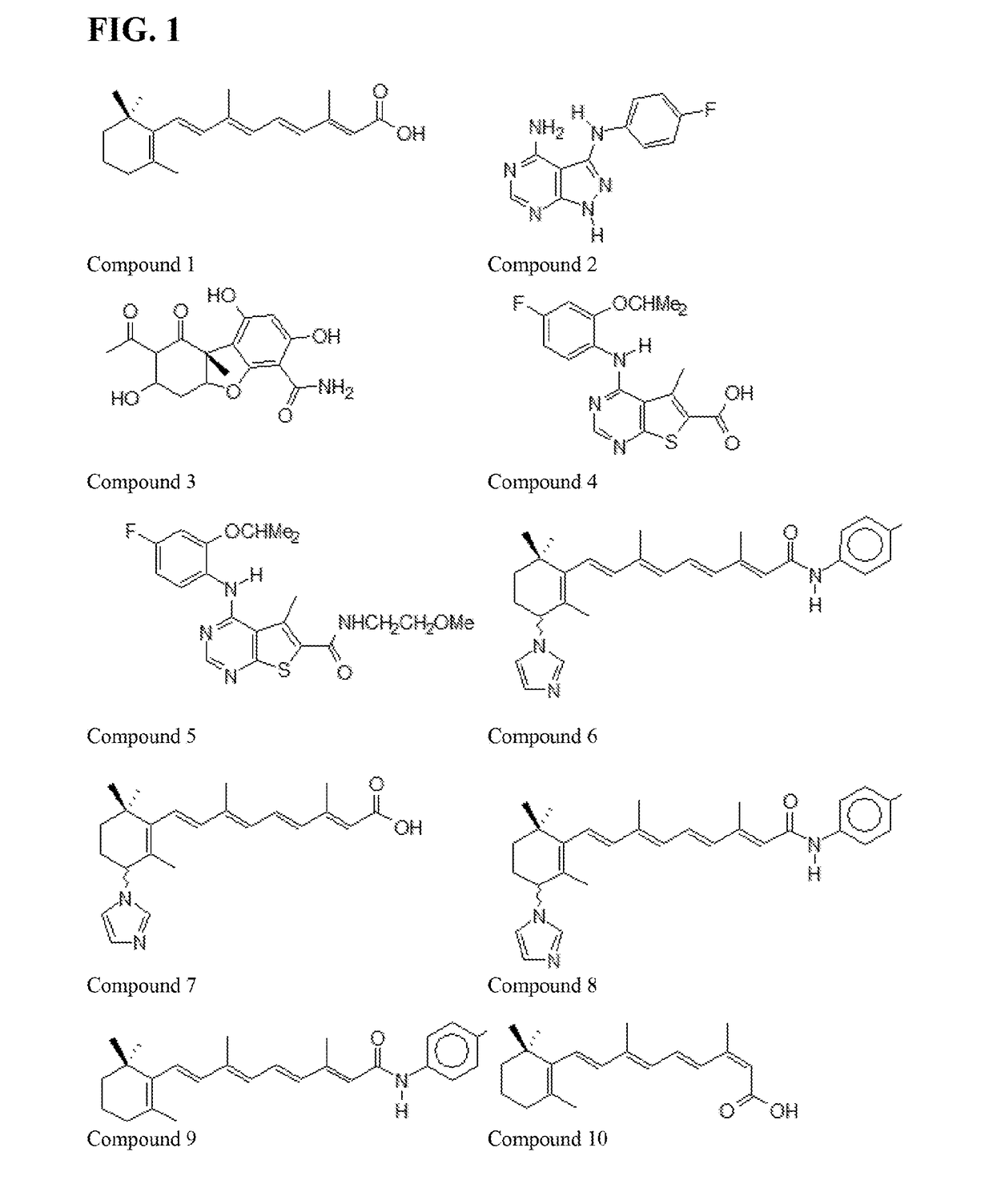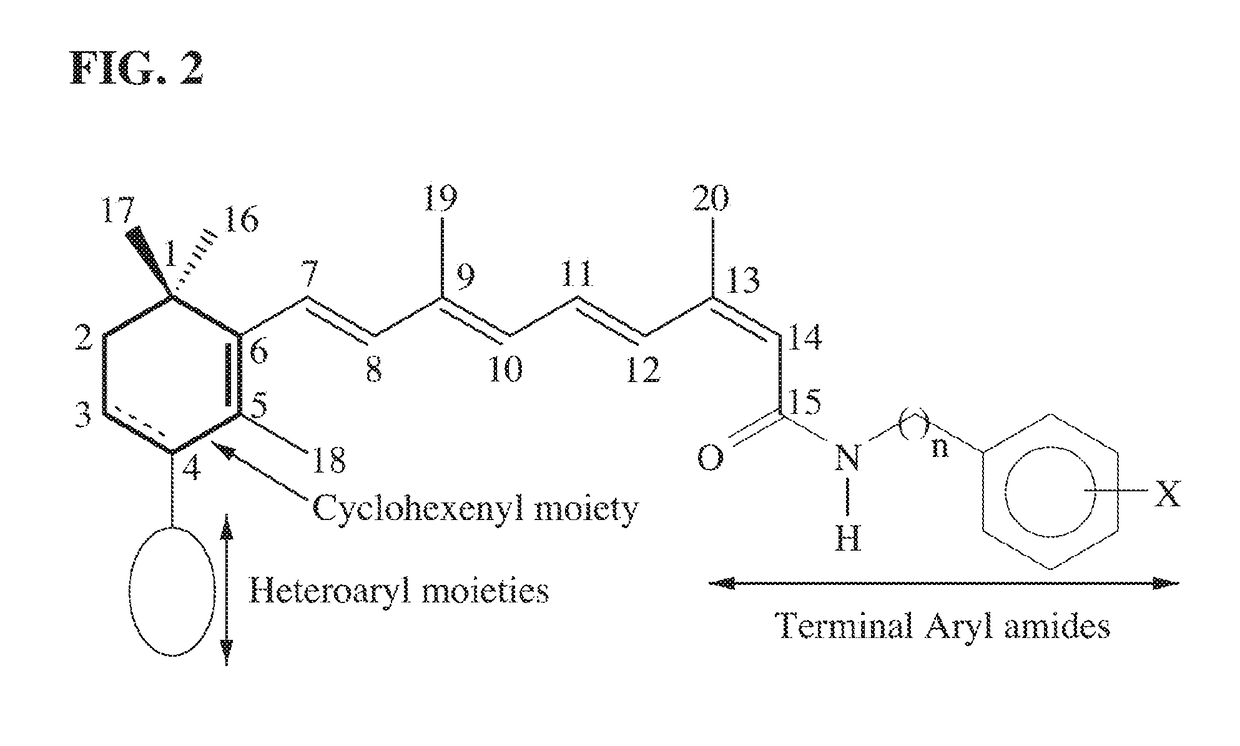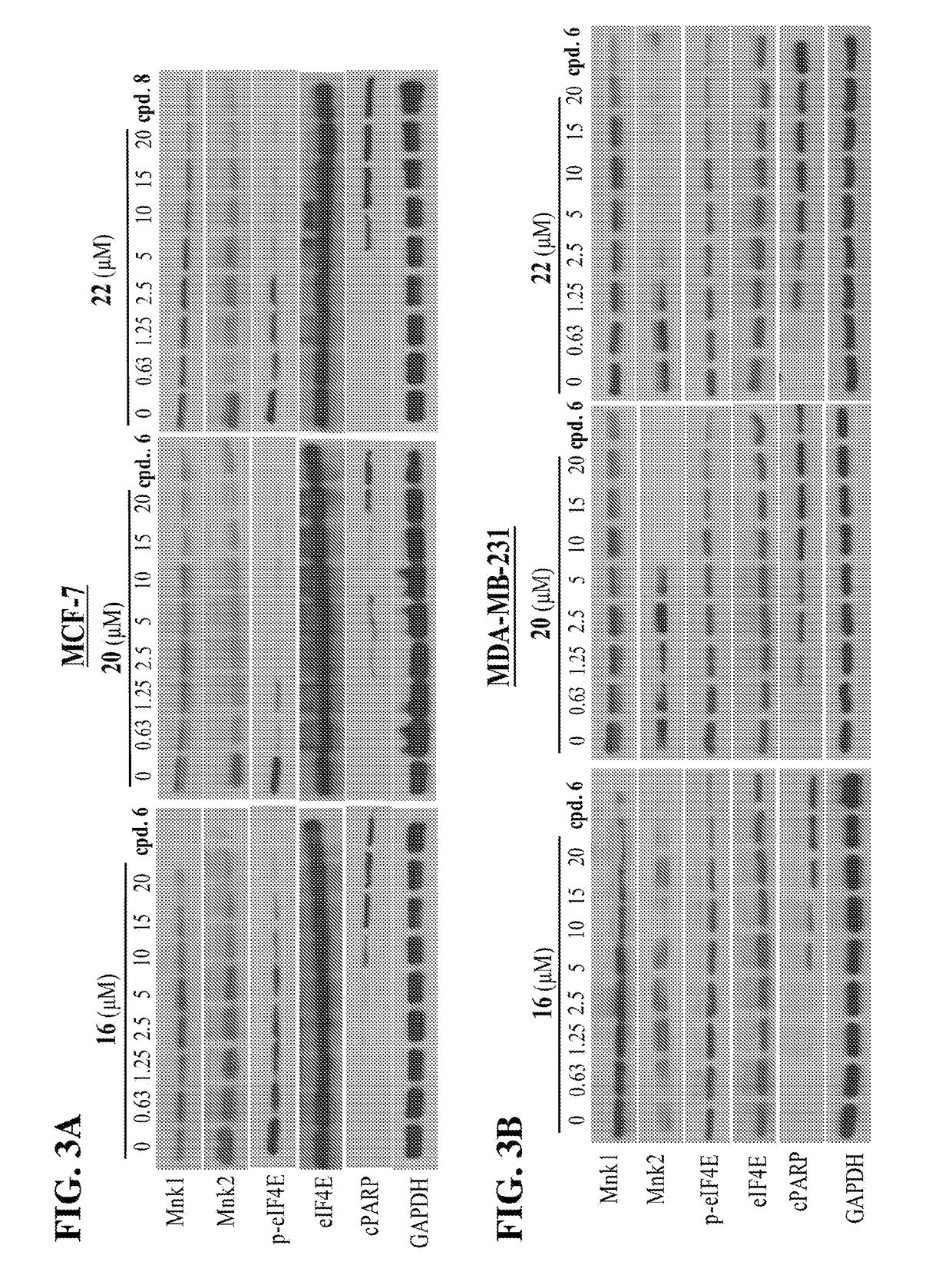13-Cis-RAMBA RETINAMIDES THAT DEGRADE MNKs FOR TREATING CANCER
- Summary
- Abstract
- Description
- Claims
- Application Information
AI Technical Summary
Benefits of technology
Problems solved by technology
Method used
Image
Examples
example 1
f 13-Cis Retinamides on the Growth of Breast and Prostate Cancers Cells In Vitro
[0093]The effects of the 13-cis novel retinamides of the present invention on human cancer cell proliferation using a variety of breast and prostate cancer cells lines using our previously described MTT assay procedures were determined.8,12b,21 The results (GI50 values) are summarized in TABLES 5 and 6. Growth inhibitory concentrations (GI50 values) are the concentrations of compounds that cause 50% growth inhibition obtained from dose-response curves. The clinically relevant retinoids, ATRA and 4-HPR and the Mnk inhibitor, cercosporamide were used as comparators in the assays.
[0094]Anti-Proliferative Activities in Breast Cancer Cell Lines:
[0095]As described earlier, the structural modification focused on modifications of the terminal amide, cyclohexene ring and C-4 substituents. As presented in TABLE 5, several important generalizations emerge from the anti-proliferative data. First, compounds of the pr...
example 2
Characterization of Compounds 16, 20 and 22 in Breast Cancer Cell Lines
[0099]As we previously reported, the anti-proliferative effects of the 1st generation MNKDAs in BC cells was due to degradation of Mnk1 / 2 with subsequent depletion of peIF4E and induction of apoptosis.8a To determine if these compounds modulate Mnk1 / 2 and related oncogenic proteins, the inventors performed western blot of lysates from MCF-7, MDA-MB-231 and MDA-MB-468 human breast cancer cells treated with Compounds 16, 20, and 22, or with vehicle (DMSO, negative control), or Compound 6 (positive control). Equal protein concentrations from MCF-7 (FIG. 3A), MDA-MB-231 (FIG. 3B) and MDA-MB-468 (FIG. 3C) cells treated for 24 hours with Compounds 16, 20 and 22 at the various concentrations as indicated and Compound 6 (20 μmol / L) were separated by SDS-PAGE and western blots probed with antibodies to Mnk1 and 2, peIF4E, eIF4E and cPARP. Vehicle treated cells were included as control and all blots were reprobed for GAPDH...
example 3
Characterization of Compounds 16, 20 and 22 in Prostate Cancer Cell Lines
[0101]Previously, we demonstrated that the anti-tumor activity of the early NRs in prostate cancer cells was due to simultaneous inhibition of the Mnk / eIF4E and androgen receptor (AR) signaling pathways.8b Similar to studies described above, the inventors performed western blot of lysates from LNCaP human prostate cancer cells treated with Compounds 16, 20, and 22, or with vehicle (DMSO, negative control), or Compound 6 (positive control). Equal protein concentrations from LNCaP cells treated with Compounds 16, 20 and 22 at different concentrations (0.6-20 μM) for 24 hours were separated by SDS-PAGE and western blots probed with antibodies to fAR, Mnk1 / 2, peIF4E, cyclin D1 and cleaved PARP. Vehicle treated cells were included as a control and all blots were reprobed for β-actin for loading control. FIG. 5A shows that the three compounds significantly and in a dose-dependent fashion, reduced the expressions of f...
PUM
 Login to View More
Login to View More Abstract
Description
Claims
Application Information
 Login to View More
Login to View More - R&D
- Intellectual Property
- Life Sciences
- Materials
- Tech Scout
- Unparalleled Data Quality
- Higher Quality Content
- 60% Fewer Hallucinations
Browse by: Latest US Patents, China's latest patents, Technical Efficacy Thesaurus, Application Domain, Technology Topic, Popular Technical Reports.
© 2025 PatSnap. All rights reserved.Legal|Privacy policy|Modern Slavery Act Transparency Statement|Sitemap|About US| Contact US: help@patsnap.com



